Inbox and Environment News: Issue 378
September 30 - October 13, 2018: Issue 378
Congratulations Narrabeen Sports High: Manly School Girl Cup Winners 2018
Congratulations to Narrabeen Sports High School on taking out the 2018 Manly School Girl Cup at Brookvale Oval On September 18th.
Results from the Manly School Girl Cup finals 2018:3rd VS 4th PlayoffNBSC Cromer defeated Pittwater High School
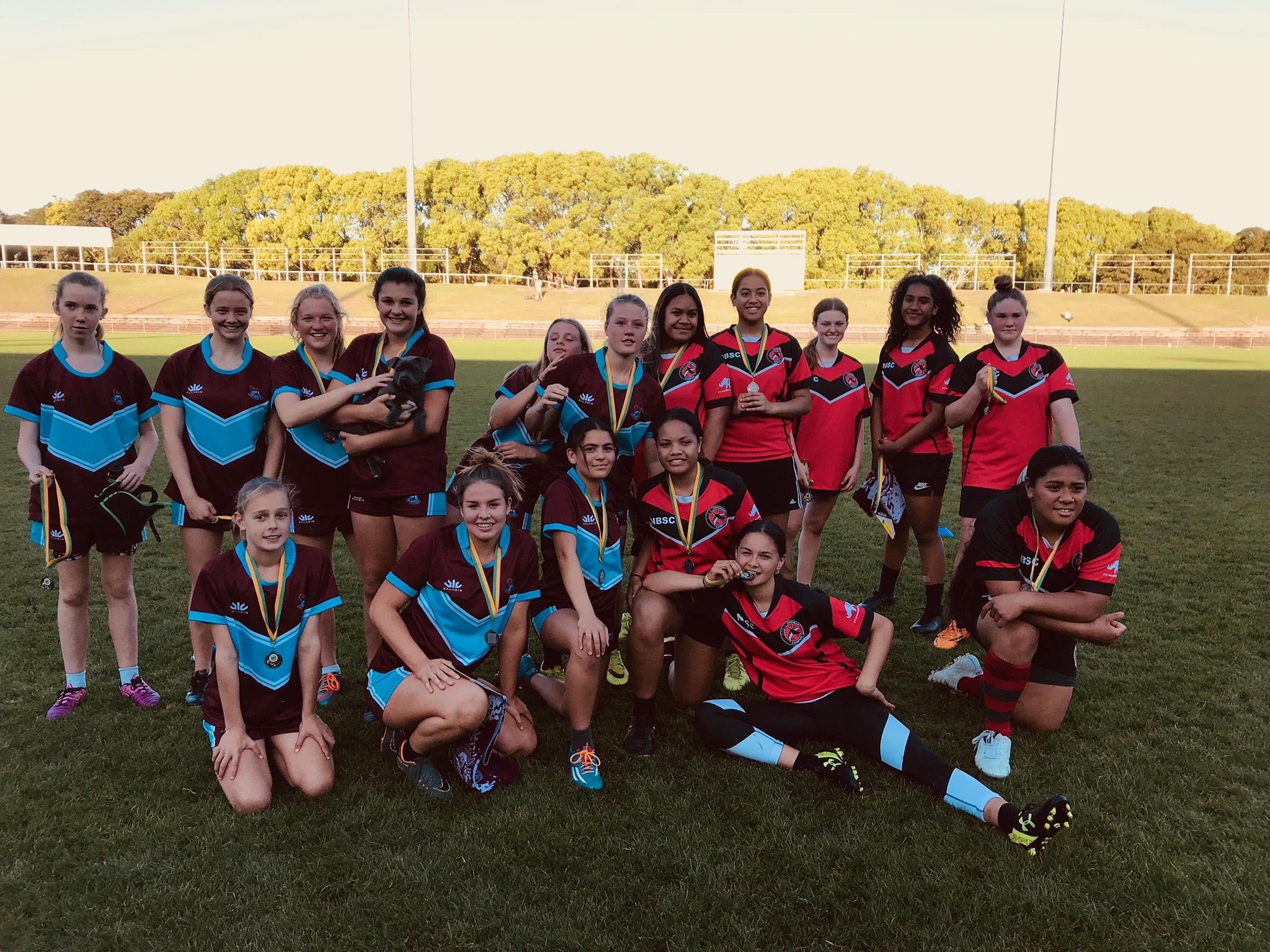
Grand FinalNarrabeen Sports High School defeated Mater Maria.
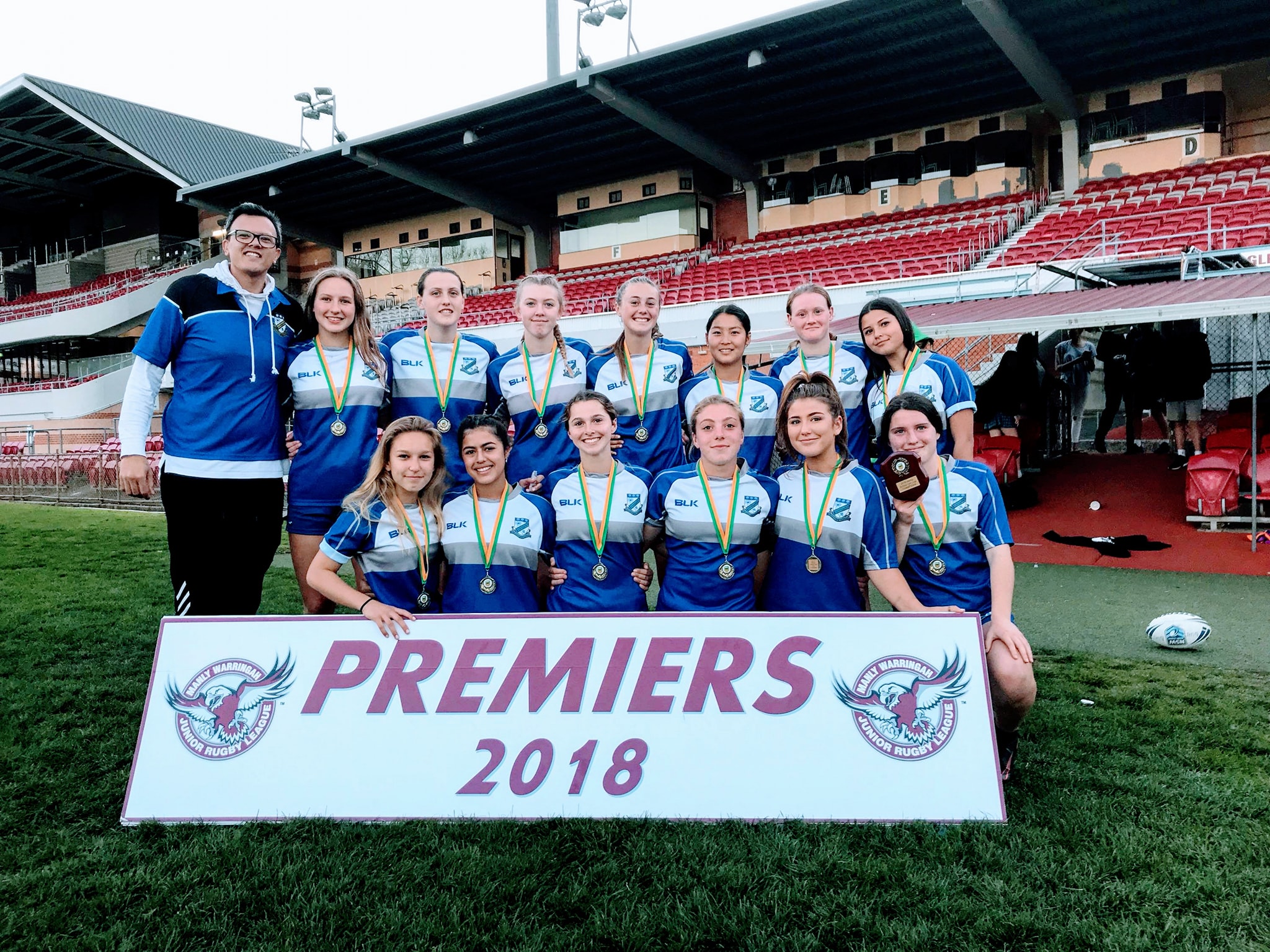
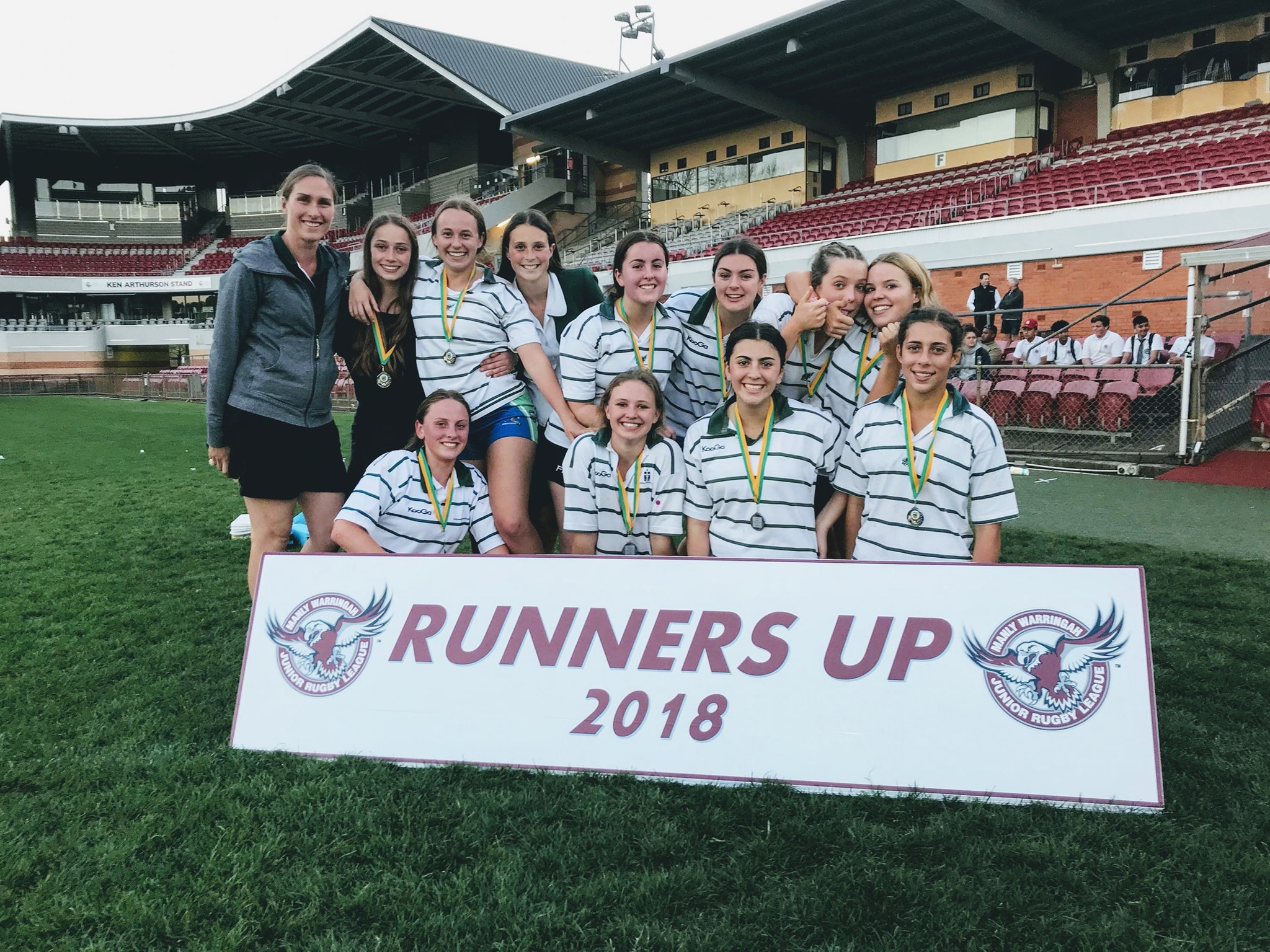
Congratulations to all girls for participating in this years competition.
Photos courtesy PlayNRL Sydney Metro



Congratulations Layne, Rob And Dave
Australians Rob Bain, Layne Beachley and Dave Macaulay have won the Azores Airlines World Masters Championship in historic fashion last weekend, claiming victory in the Final bouts against Cheyne Horan (AUS), Rochelle Ballard (HAW) and Shane Beschen (HAW) respectively in the Grand Masters, Women’s Masters and Men’s Masters divisions held in good three foot surf at praia de Santa Barbara.
A World Surf League (WSL) Specialty Event, the Azores Airlines World Masters Championship was treated to an abundance of swell and great performances by some of the legends of surfing from past generations, culminating with the crowning of the Champions.
AZORES AIRLINES WORLD MASTERS CHAMPIONSHIP FINAL RESULTS:1 - Dave Macaulay (AUS) 14.432 - Shane Beschen (HAW) 11.333rd Fabio Gouveia (BRA)4th Luke Egan (AUS)
AZORES AIRLINES WORLD GRAND MASTERS CHAMPIONSHIP FINAL RESULTS:1 - Rob Bain (AUS) 17.102 - Cheyne Horan (AUS) 9.533rd Simon Anderson (AUS)4th Michale Ho (HAW)5th Glen Winton (AUS) 6th Hans Hedemann (HAW)
AZORES AIRLINES WORLD WOMEN’S MASTERS CHAMPIONSHIP FINAL RESULTS:1 - Layne Beachley (AUS) 12.932 - Rochelle Ballard (HAW) 10.433rd Frieda Zamba (USA)4th Pauline Menczer (AUS)5th Pam Burridge and Jodie Cooper (both AUS)
Read Surfing Australia's report HEREPhoto WSL / LAURENT MASUREL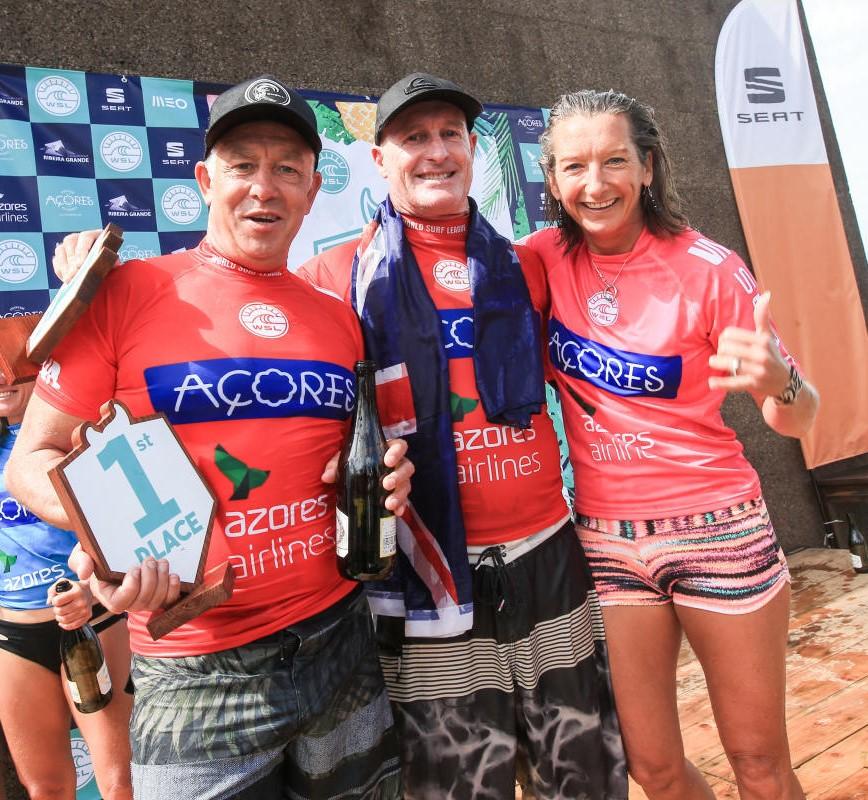

Pittwater Environment Notes: Issue 378
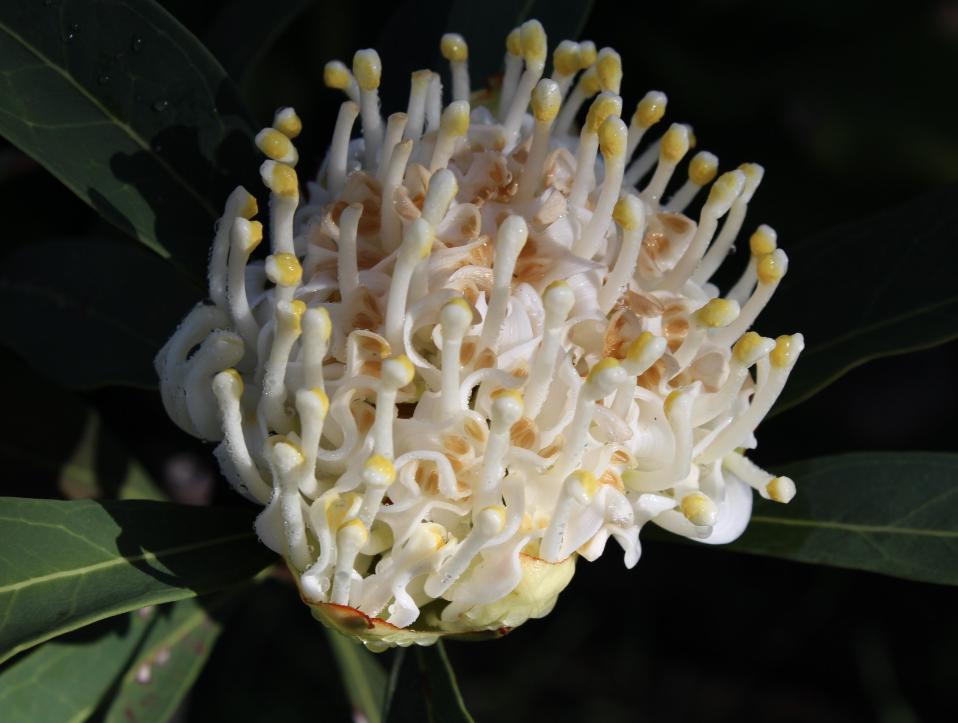
Below: the view north over Newport, Bilgola and Avalon and the view south over Bungan Beach

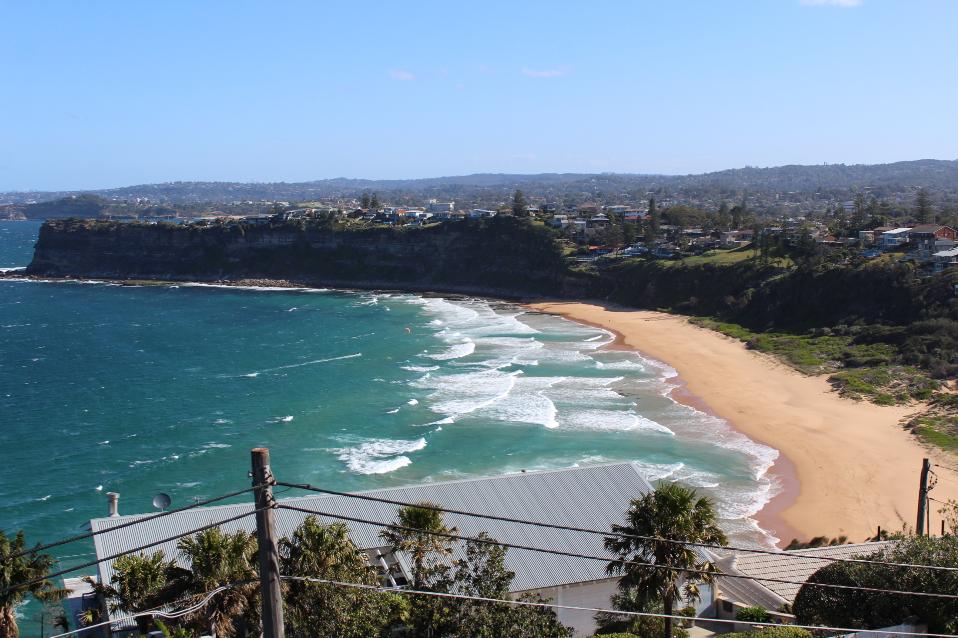
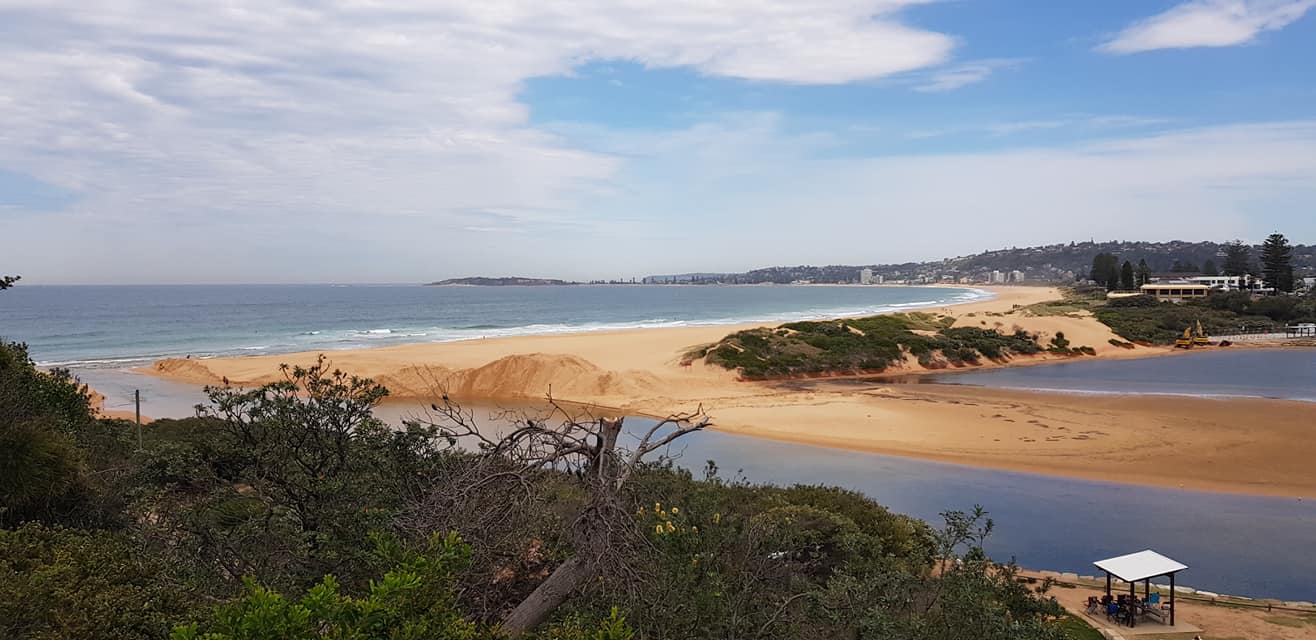
Council has commenced Narrabeen Lagoon entrance sand removal works this week. The work which finishes mid-December involves Council contractors removing approximately 45,000 square metres of sand from the lagoon entrance using large-scale excavators and returning it by trucks to Collaroy-Narrabeen Beach at Mactier Street.
Photo taken on Friday September 28th - courtesy of and by Neale Ashby - MORE HERE
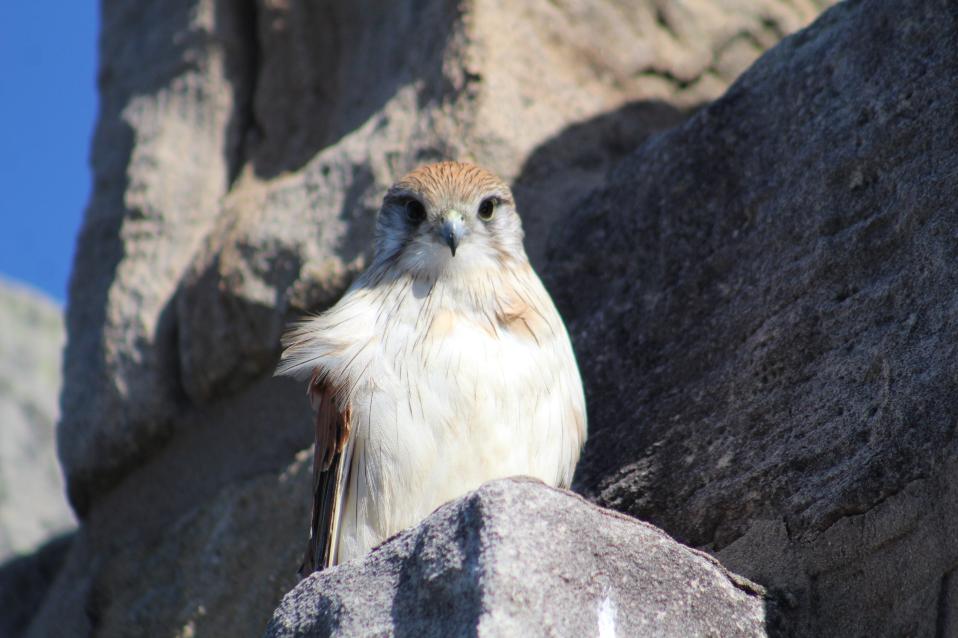
Juvenile Nankeen Kestral, Falco cenchroides - at Bungan Castle.
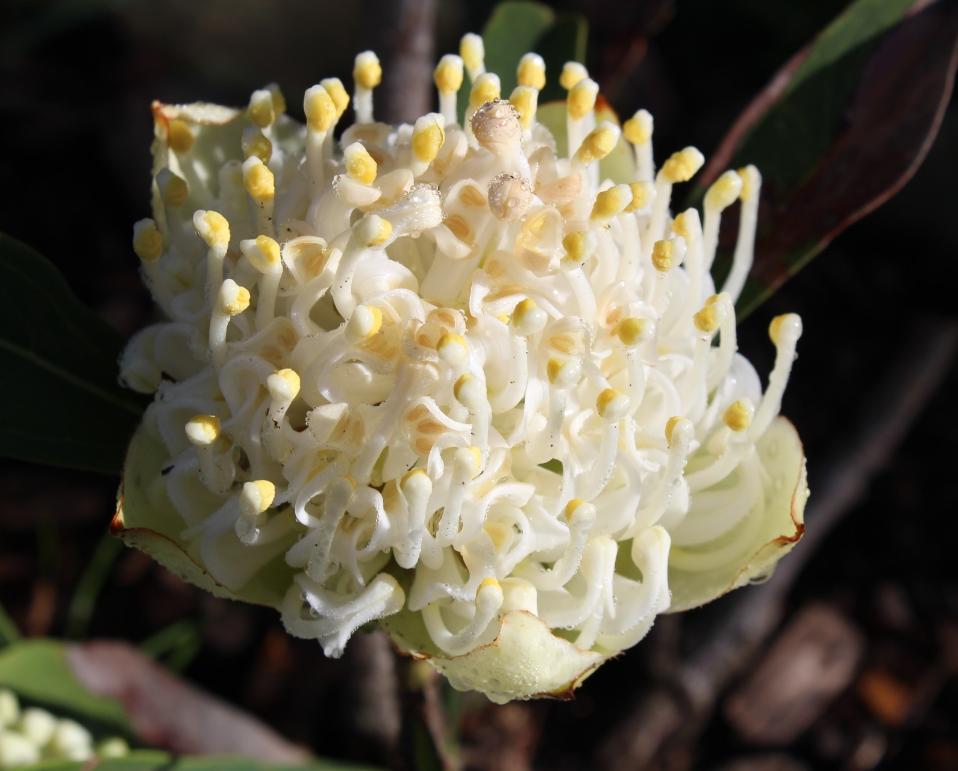
White Waratah, Telopea speciosissima, spotted in a residents garden in Pittwater this week.
Visit: A Bunch Of Wildflowers: Historical Spring September Songs
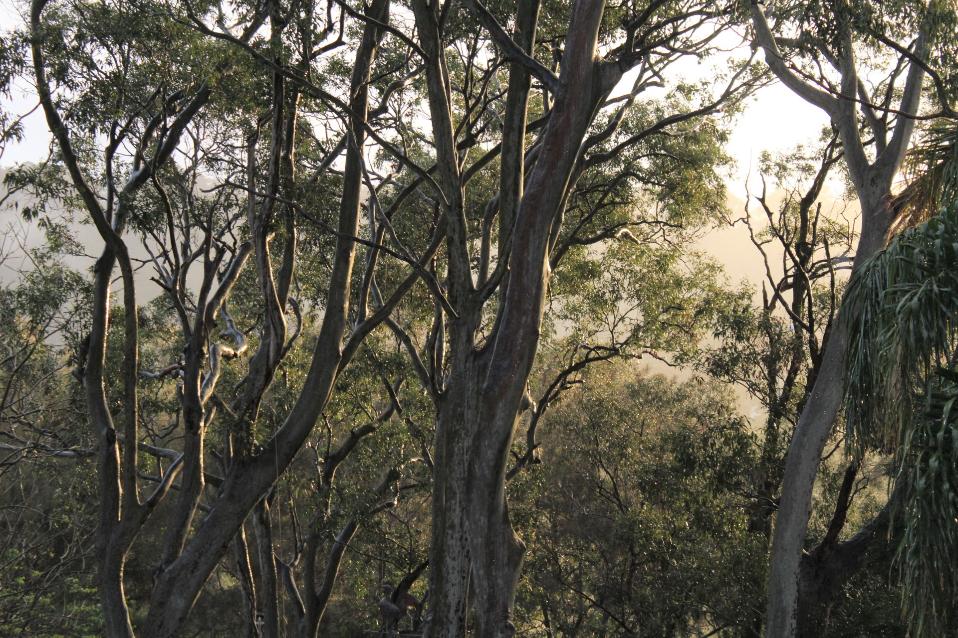
Pittwater Spotted Gums, Corymbia maculata, after Spring rains drenching, on sunset, as sun breaks through again - this week!
Below: the view north over Newport, Bilgola and Avalon and the view south over Bungan Beach

Photo taken on Friday September 28th - courtesy of and by Neale Ashby - MORE HERE
Juvenile Nankeen Kestral, Falco cenchroides - at Bungan Castle.
White Waratah, Telopea speciosissima, spotted in a residents garden in Pittwater this week.
Visit: A Bunch Of Wildflowers: Historical Spring September Songs
Pittwater Spotted Gums, Corymbia maculata, after Spring rains drenching, on sunset, as sun breaks through again - this week!
Urban Tree Canopy Plan Now On Public Exhibition: 100 Thousand Trees Planned
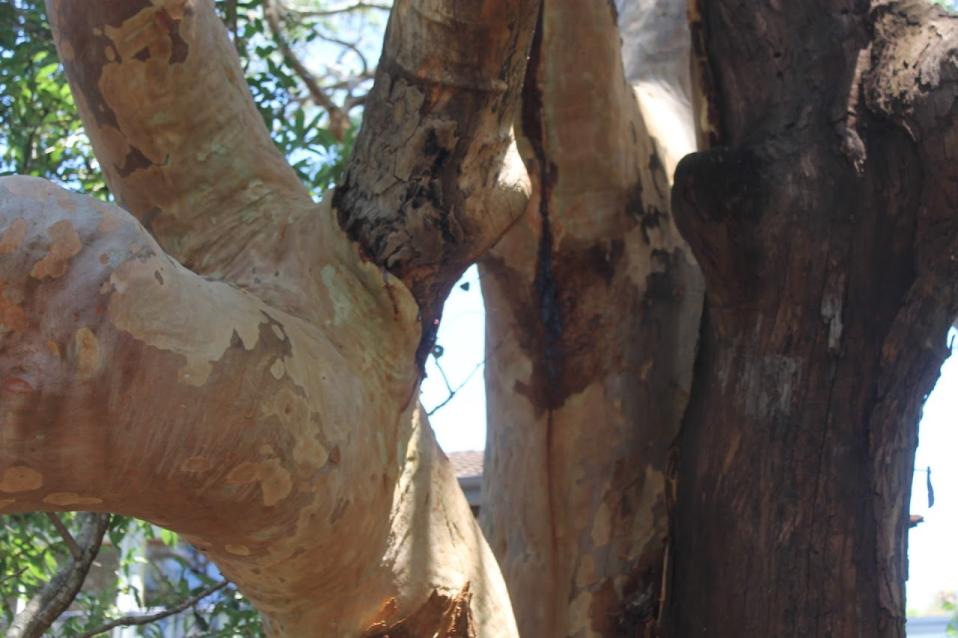
Plan To Protect And Enhance Northern Beaches’ Precious Urban Tree Canopy
Friday September 28, 2018: From Northern Beaches Council
Over 100,000 new trees planted on Council land, an iconic tree register and tools to encourage more trees on private property are key actions in Council’s first draft Urban Tree Canopy Plan now on public exhibition.
The draft Plan outlines the strategic directions and guiding principles for the management of trees across the Northern Beaches over the next five years.
Northern Beaches Mayor, Michael Regan said the four strategic directions of the draft Plan provide a comprehensive and cohesive approach to sustaining the future of our urban trees over the next five years by:
- protecting existing urban trees;
- maintaining the Northern Beaches’ existing urban tree canopy cover;
- improving tree diversity and health; and
- by motivating, inspiring and supporting the community to protect and enhance our urban trees.
“It’s very exciting to have this plan fast tracked and ready for community comment. Similar strategies had been in development under the former Councils but what a great outcome of amalgamation that our tree canopy can now be managed in a coordinated way across the whole of the Northern Beaches area,” said Mayor Regan.
“We are in an enviable position of being one of the few areas within the Sydney Metropolitan area with canopy coverage greater than 50 percent, at 64.2 percent. Many council areas in Sydney have less than 20 percent urban canopy.
“There are, however, increased demands upon the Northern Beaches environment as more residents and businesses seek to call the Northern Beaches home.
“The plan details how we will implement an aggressive tree planting program on council owned land of at least 5,000 new trees annually, which would mean 100,000 over the next twenty years.
“We’ll introduce an iconic tree register and ensure that any mature tree that has to be removed due to poor health or for unavoidable operation reasons will be offset by planting at least two more.
“The immediate focus will be on collating accurate baseline data to allow us to monitor the actions of the plan and ultimately measure how successful we are in protecting and maintaining a healthy and diverse canopy cover.
“Engaging our community in protecting and enhancing our urban trees will also be a critical factor in achieving the objectives of the Urban Tree Canopy Plan.
“I encourage community feedback on the draft Plan and look forward to more ideas from the community,” Mayor Regan said.
The success and progress of the all the actions listed in the plan will be reviewed annually.
The draft Northern Beaches Urban Tree Canopy Plan is available at northernbeaches.nsw.gov.au
Friday September 28, 2018: From Northern Beaches Council
Over 100,000 new trees planted on Council land, an iconic tree register and tools to encourage more trees on private property are key actions in Council’s first draft Urban Tree Canopy Plan now on public exhibition.
The draft Plan outlines the strategic directions and guiding principles for the management of trees across the Northern Beaches over the next five years.
Northern Beaches Mayor, Michael Regan said the four strategic directions of the draft Plan provide a comprehensive and cohesive approach to sustaining the future of our urban trees over the next five years by:
- protecting existing urban trees;
- maintaining the Northern Beaches’ existing urban tree canopy cover;
- improving tree diversity and health; and
- by motivating, inspiring and supporting the community to protect and enhance our urban trees.
“It’s very exciting to have this plan fast tracked and ready for community comment. Similar strategies had been in development under the former Councils but what a great outcome of amalgamation that our tree canopy can now be managed in a coordinated way across the whole of the Northern Beaches area,” said Mayor Regan.
“We are in an enviable position of being one of the few areas within the Sydney Metropolitan area with canopy coverage greater than 50 percent, at 64.2 percent. Many council areas in Sydney have less than 20 percent urban canopy.
“There are, however, increased demands upon the Northern Beaches environment as more residents and businesses seek to call the Northern Beaches home.
“The plan details how we will implement an aggressive tree planting program on council owned land of at least 5,000 new trees annually, which would mean 100,000 over the next twenty years.
“We’ll introduce an iconic tree register and ensure that any mature tree that has to be removed due to poor health or for unavoidable operation reasons will be offset by planting at least two more.
“The immediate focus will be on collating accurate baseline data to allow us to monitor the actions of the plan and ultimately measure how successful we are in protecting and maintaining a healthy and diverse canopy cover.
“Engaging our community in protecting and enhancing our urban trees will also be a critical factor in achieving the objectives of the Urban Tree Canopy Plan.
“I encourage community feedback on the draft Plan and look forward to more ideas from the community,” Mayor Regan said.
The success and progress of the all the actions listed in the plan will be reviewed annually.
The draft Northern Beaches Urban Tree Canopy Plan is available at northernbeaches.nsw.gov.au
How Can You Be Involved?
We have developed an Urban Tree Canopy Plan (draft) as part of our commitment to greening the Northern Beaches.
- View the Urban Tree Canopy Plan (draft)
- Read the Frequently Asked Questions
- Read the Council report recommending exhibition
Have Your Say
Attend a drop in session
- Manly Town Hall forecourt - Wed 24 Oct - 12pm - 1pm
- Glen Street Theatre - Thu 1 Nov - 12pm - 1pm
- Mona Vale Library lane - Thu 8 Nov - 12pm - 1pm
- Dee Why Beach, The Strand - Wed 14 Nov - 12pm - 1pm
Make a written submission: CEO, Northern Beaches Council, PO Box 1655, Manly, NSW 2099, marked “Urban Tree Canopy Plan 2018”
Submissions close Thursday 15 November 2018
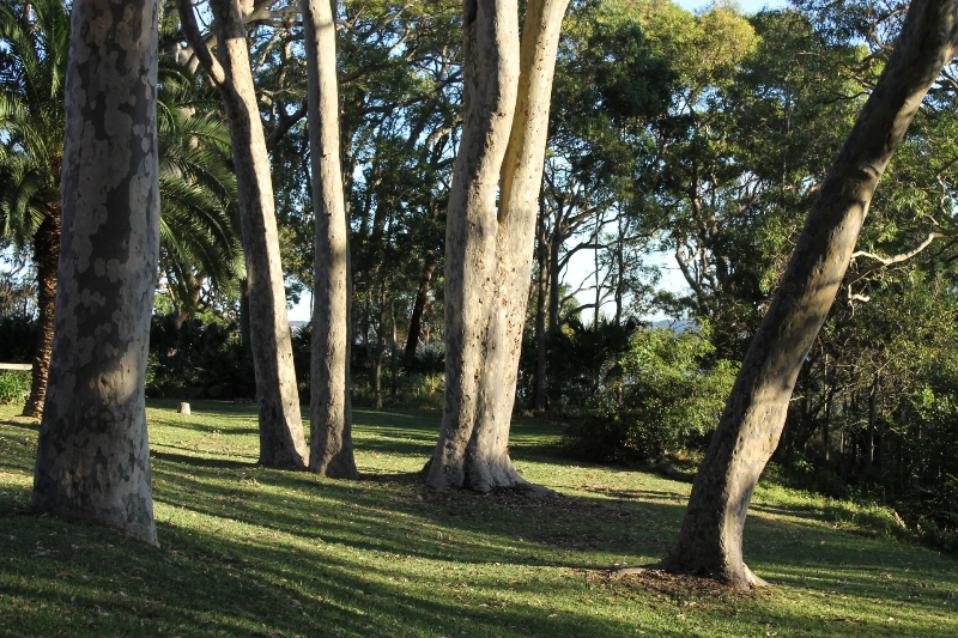
We have developed an Urban Tree Canopy Plan (draft) as part of our commitment to greening the Northern Beaches.
- View the Urban Tree Canopy Plan (draft)
- Read the Frequently Asked Questions
- Read the Council report recommending exhibition
Have Your Say
Attend a drop in session
- Manly Town Hall forecourt - Wed 24 Oct - 12pm - 1pm
- Glen Street Theatre - Thu 1 Nov - 12pm - 1pm
- Mona Vale Library lane - Thu 8 Nov - 12pm - 1pm
- Dee Why Beach, The Strand - Wed 14 Nov - 12pm - 1pm
Make a written submission: CEO, Northern Beaches Council, PO Box 1655, Manly, NSW 2099, marked “Urban Tree Canopy Plan 2018”
Submissions close Thursday 15 November 2018

Tackling The Waste Challenge Head On
Opinion piece26 September 2018: The Hon. Melissa Price MP, Minister for the Environment
In 2015-16, 3.513 million tonnes of plastics were consumed in Australia.
By gross weight, that’s roughly the equivalent of two million cars. Or 50,000 family homes.
At the April Meeting of the Environment Ministers, we announced the phase-out of microbeads, those tiny solid plastic particles that were previously prominent in cosmetic and personal care products. 94 per cent of these products are now microbeads-free and we’re determined to eliminate the final six per cent and examine the options to broaden the phase out to other products.
We proudly endorsed a target of 100 per cent of Australian packaging being recyclable, compostable or reusable by 2025 or earlier. Our Government has responded to China’s recent restrictions on waste exports, by agreeing to work with the states and local governments to increase Australia’s recycling capacities.
So I’m pleased to announce today that the Morrison Government continues to support the industry’s charge towards a sustainable, long-term vision for reducing waste.
Today in Melbourne I will join business leaders from packaging, retail, logistics, manufacturing, recycling and waste management businesses, at a milestone industry event, hosted by the Australian Packaging Covenant Organisation. Event attendees included Aldi, ALGA, Amcor, Australia Post, Boomerang Alliance, Chep, Close the Loop, Coca-Cola Amatil, Coles, Detmold, Goodman Fielder, Lion, Metcash, Nestlé, Orora, Pact Group, Planet Ark, Redcycle, Simplot, Suez, Tetra Pak, Unilever, Veolia, Visy and Woolworths. The industry – and I commend them for both the ambition and the leadership they’re showing with this– will announce their own voluntary targets to get to that 100 per cent goal we set back in April.
Industry commitments include:- 70% of Australia’s plastic packaging will be recycled or composted by 2025;
- 30% average recycled content will be included across all packaging by 2025;
- Problematic and unnecessary single-use plastic packaging will be phased out through design, innovation or introduction of alternatives.
I would like to congratulate these industries on their efforts to help change the way we all deal with waste.
Today I will also launch the Australasian Recycling Label tool to help us achieve these ambitious targets.
One of the biggest issues for disposal of our waste, is the contamination of what goes into our yellow bins – running the risk that it ends up as landfill rather than used in a product such as recycled plastic pallets or bottles.
Developed by Planet Ark, PREP Design and APCO, these new labels have been designed to help us as consumers better understand how we can recycle packaging.
It’s a confusion many of us share, with more than 200 different recycling labels currently used in Australian packaging. Like most of you, I don’t know how many times I’ve hesitated before the recycling bin, thinking should I, or shouldn’t I?
Australians want to do the right thing but we’re confused.
This new labelling system will educate us all on the correct bin to use to ensure we reduce the levels of contamination in our recycling.
More than 50 Australian businesses have committed to the program, with Woolworths, Officeworks, Nestle, Blackmores, Australia Post, T2 and Plantic starting to use the standardised labels already.
Both these achievements, the targets and labelling, continue our steadfast conviction that all Australians – whether industry, governments, consumers – need to pull together to fight the good fight on waste.
There’s been a shift in public sentiment in recent years – I keep telling my parliamentary colleagues and the broader community that waste is now sexy.
Not waste itself, but the ideology behind it: that small but significant changes in our lifestyles will have a profound impact on the world we leave for our children.
A 30-day challenge I like to set myself is to collect every plastic item to see just how much waste one household can generate. It’s a fascinating experiment to do with your kids and a real lesson in how much we consume.
The challenge is for Governments to set the agenda and get the policy settings right. With these announcements, the Morrison Government is doing just that.
- 70% of Australia’s plastic packaging will be recycled or composted by 2025;
- 30% average recycled content will be included across all packaging by 2025;
- Problematic and unnecessary single-use plastic packaging will be phased out through design, innovation or introduction of alternatives.
Mosses On The Move: Rapid Changes In Antarctica's Daintree
September 25th, 2018: Australian Antarctic DivisionA new study has found sudden and dramatic changes in East Antarctica’s old-growth moss, known as the “Daintree of the Antarctic”.
The 13-year study published in Nature Climate Change was led by researchers from the University of Wollongong (UOW), with support from scientists at the Australian Antarctic Division (AAD) and the Australian Nuclear Science and Technology Organisation (ANSTO).
Monitoring of moss beds in the Windmill Islands, near Australia’s Casey research station, began in 2000, as part of a PhD project led by the Division’s Dr Jane Wasley.
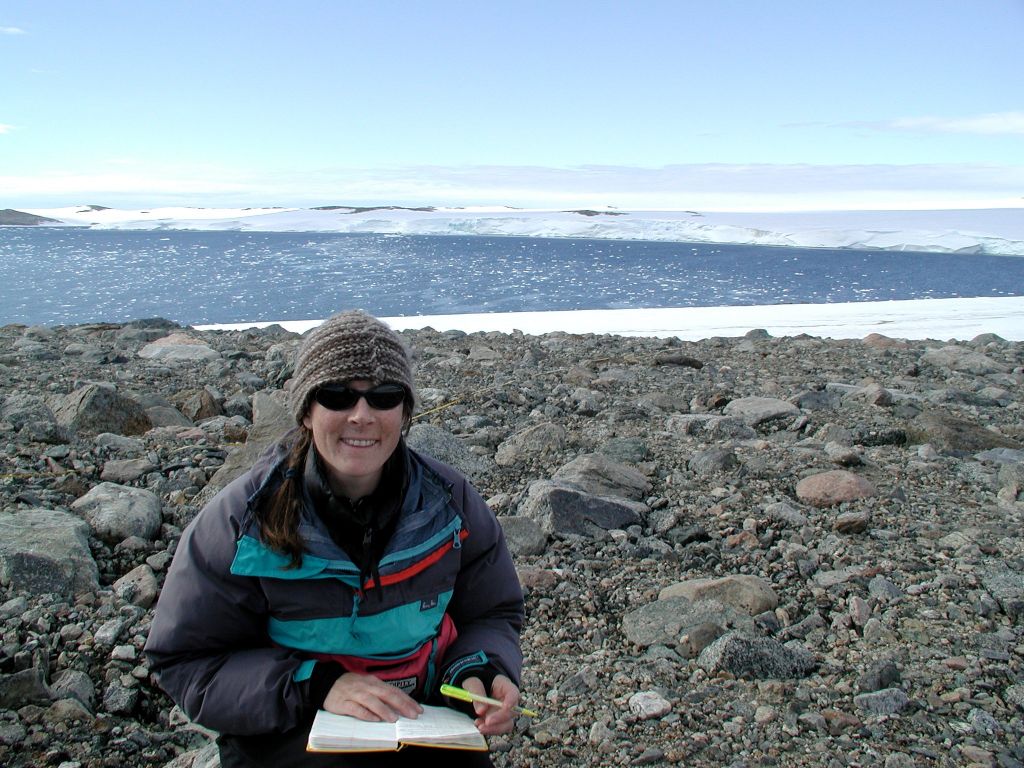
Jane Wasley at the Robinson Ridge monitoring site, south of Casey research station. (Photo: Johanna Turnbull)
Dr Wasley said when the researchers returned in 2008, they found the moss beds had turned from bright green to dark red, which is an indication of stress.
“We never really suspected when we embarked on this work that we would observe such dramatic changes in such a short period of time,” Dr Wasley said.
“These slow growing communities are more sensitive to environmental changes than previously thought.”
The researchers also observed a significant change in the composition of moss species at the site, which is consistent with the onset of drier growing conditions.
When the study began, the moss beds were dominated by Schistidium antarctici, an Antarctic endemic species that can survive long periods under water.
By 2013, many areas were being encroached by two other moss species of wider distributions that thrive in drier conditions and are less tolerant to being submerged.
“There has been a change in local growing conditions linked to broader atmospheric changes around East Antarctica over the same period.” Dr Wasley said.
“Local and global climate data shows that parts of East Antarctica have become colder, drier and windier in recent decades, most likely in response to changes in the ozone layer.”
The moss plants themselves were also found to show evidence of drying conditions.
Long moss shoots were dated using a similar approach to that used for tree-rings.
This dating work was carried out by Laurence Clarke, a molecular ecologist with the AAD and Antarctic Climate & Ecosystems Cooperative Research Centre.
Markers within dated sections of the moss shoots revealed that the moss beds have become drier over recent decades.
The work is supported by the University of Wollongong’s Global Challenges Program and the Australian Antarctic Division.
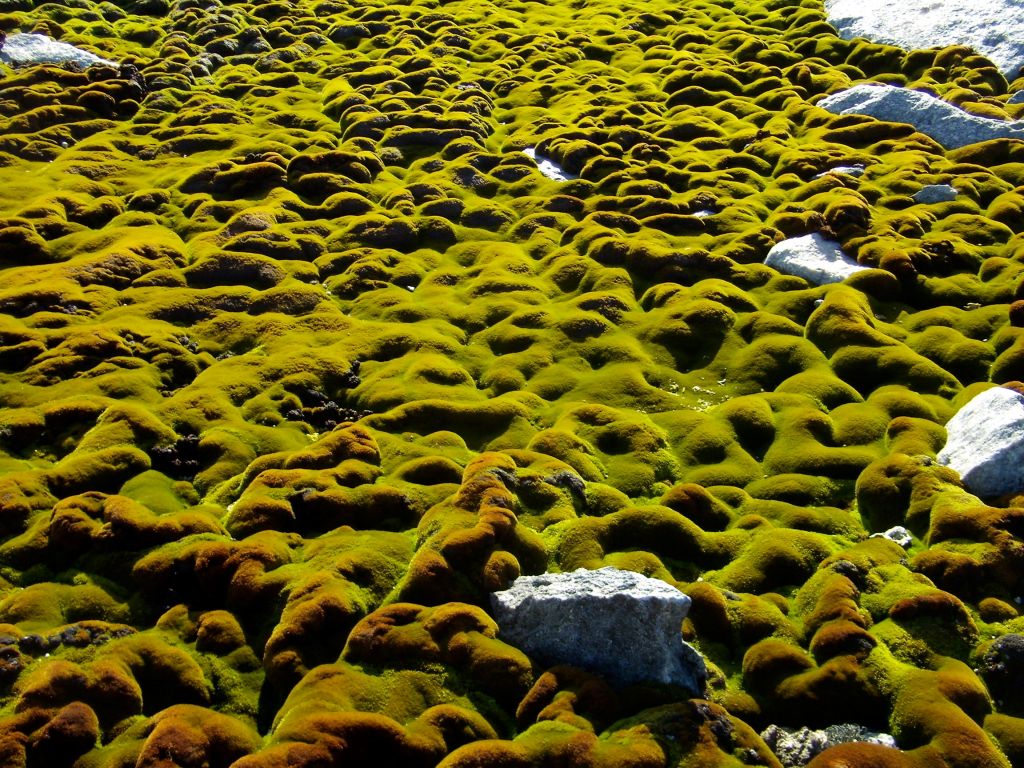
Healthy moss growing at one of the monitoring sites in the Windmill Islands, near Casey station. (Photo: Sharon Robinson)


Manly Ocean Lovers Take The Water In Support Of Marine Sanctuaries
September 24, 2018: NSW Nature Conservation CouncilMore than 110 ocean lovers from the Manly region took to the water on the weekend in support of a Sydney Marine Park that includes no-take sanctuary zones.
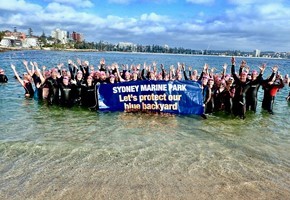
Photo by Nick Dawkins
About 80 ocean swimmers from Manly’s Bold and Beautiful group took to Cabbage Tree Bay on Saturday and 30 divers, snorkelers and beach cleaners hit Manly Cove on Sunday. The divers and swimmers all have the same aim: to protect Sydney’s amazing marine life in sanctuary zones as part of a Sydney Marine Park.
The Bold and Beautiful group was set up by people who love ocean swimming and the stunning natural beauty of Cabbage Tree Bay. More than 16,000 people have now swum with the group since it began 10 years ago, with up to 500 people swimming daily during summer.
Fiona Dobrijevich, a daily 6am swimmer, has been ploughing these waters between North Curl Curl and Fairy Bower every day for 25 years, and less regularly for 40. “Despite the vast improvement in water quality, fish only thrive in the marine sanctuary. They don’t know anything about boundaries, but outside of the sanctuary it’s pretty barren. The difference between Freshwater Headland and the Bower in Cabbage Tree Bay is very evident.”
Elaine De Jager is a part-time teacher at local primary schools who swims every day with the 7am group. “Sanctuary zones within marine parks are so important and can only have a positive effect for everyone. The Cabbage Tree Bay area is a nursery for dusky whalers in summer and a breeding ground for giant cuttlefish and Port Jackson sharks in winter time. The kids I teach love hearing about the different animals I encounter each morning and we educate our friends about the amazing marine life we have right here in our blue backyard.”
Divers and snorkelers. A group of around 30 divers, snorkelers and beach cleaners participated in a Dive Against Debris in Manly Cove on Sunday at a regular event run by Dive Centre Manly and PADI Project Aware.
Richard Nichols is owner of Dive Centre Manly and president of Dive Industry Association of Australia. “When the marine sanctuary at Cabbage Tree bay was established 15 years ago it was completely barren,” he said. “There was virtually no marine life left in the bay, and many people asked why would you want to protect something that is so devoid of life? Since the protection was put in place the change has been incredible. The marine vegetation has regrown and the fish life has returned. Because of this is it is now by far the most popular dive location in Sydney because of the abundance of marine life. We urgently need more places like this in Sydney for all ocean users to enjoy.”
Ali Lekyam is a dive master and marine biologist. “It’s very clear that fish numbers are much lower in the harbour compared with the sanctuary zone at Cabbage Tree Bay,” she said. “We need to ensure our marine life has adequate sanctuary zones like Cabbage Tree Bay to help replenish dwindling fish stocks and ensure our marine ecosystems are healthy and resilient. Our precious marine life needs sanctuary zones to grow and reproduce but we also need those areas to be free from plastic if we are to give our marine ecosystems a chance to thrive.”
Sydney Marine Park consultationDespite the government’s statement that sanctuary zones would not be part of the proposed Sydney Marine Park, marine sanctuaries are part of the proposal the public had been asked to comment on.

Nominate Your Unsung Local ‘Eco-Hero’
Do you know someone who deserves acknowledgement for their outstanding environmental and conservation achievements to protect the Northern Beaches unique natural environment?
Northern Beaches Council is seeking nominations of community members who have volunteered their time and effort to enhance the region’s diverse and valuable, natural habitat.
The Northern Beaches Eco Awards (formerly the Manly Environment Centre Eco Awards) are now in their 13th year and are open to anyone over 18 years of age. People can be nominated in the following categories: Bushland, Oceans, Waterways and Biodiversity.
Northern Beaches Mayor Michael Regan encouraged the community to get involved.
“Anyone who is doing exceptional work to preserve the natural environment deserves recognition, so we would like to receive their nomination.”
Last year’s Eco Award was won by Belinda Elworthy from Plastic Free Northern Beaches who worked hard to raise awareness about the impact of plastic pollution on the marine environment.This year’s winner will receive an original artwork as well as public recognition for their work and achievements.
Previous winners include Midnight Oil front man and former federal parliamentarian Peter Garrett, Northern Beaches Surfrider Foundation president, Brendan Donohue, and Angelika Treichler, who was the force behind the “Penguin Wardens”, a group she formed to protect Manly’s Little Penquins.
In 2017, a record 34 nominations were received for this prestigious community focussed award.
Nomination forms are available on Council’s website. The deadline for applications is 5pm, Monday 1 October.
Winter Survey Shows Decline In Waterbirds In Port Stephens
September 25th, 2018: NSW Office of Environment & HeritageThe most recent survey of waterbirds in the Port Stephens area shows an alarming decline of once-common birds over a 10-year period.
The Office of Environment and Heritage surveys local wading birds and shorebirds twice a year in summer and winter, in conjunction with Hunter Bird Observers Club.
National Parks and Wildlife Service Area Manager Andrew Bond, said tentative results showed the lowest-ever winter count of shorebirds.
"This is our 15th bi-annual survey and while it is hard to say whether the decline is due to local factors in Port Stephens, the trend downwards over the past 10 years is both sad and alarming.
"In general numbers were low for both Australian resident shorebirds as well as migratory birds, but any real decline would only be confirmed by future surveys," Mr Bond said.
"One of the most endangered shorebirds, the Pied Oystercatcher, listed as vulnerable to extinction under the Environment Protection and Biodiversity Conservation Act 1999 (the EPBC Act), recorded 154 sightings in July 2008.
"Numbers were low but reasonably stable until this year when they crashed to just 92 birds.
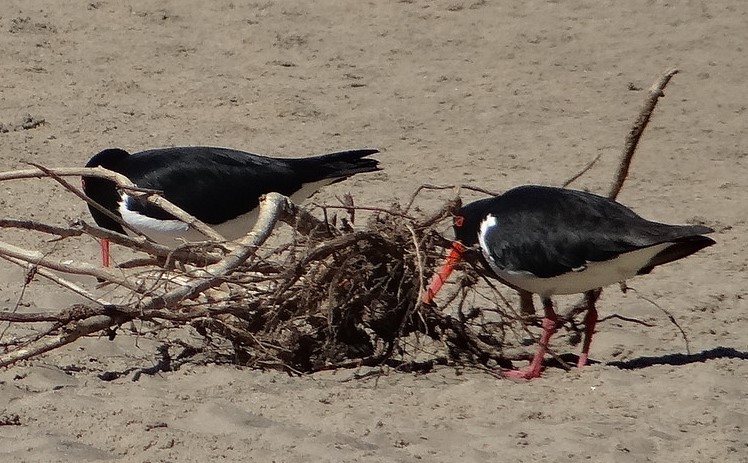
Pied oystercatcher - OEH photo
"This is significant because Port Stephens' population of Pied Oystercatchers represents a significant proportion of the NSW population – there are less than 200 breeding pairs left along the entire NSW coastline and in some areas, for example Byron Bay, there are only six known breeding pairs left.
"Other species such as the Bar-tailed Godwit numbers have almost halved over a decade and the increase we have observed in any of the species counted was very small," Mr Bond said.
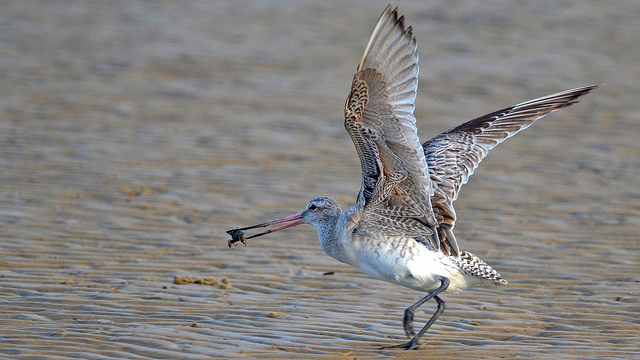
Bar-tailed Godwit - photo: Gary Dunnet
Shorebird counts are carried out across Australia at around the same time to estimate national populations and track trends.
The winter survey indicates the success of the previous year's breeding season and Port Stephens is well known to be a significant site for shorebirds in New South Wales.
For some species, such as the Eastern Curlew it is considered nationally or internationally important.
However, Alan Stuart from Hunter Bird Observers said one good news story from the results was an increase in successful breeding amongst the critically endangered Beach Stone-Curlew.
"There has been a pair of Beach Stone-Curlews breeding in the area for several seasons now and last season we found a second nest," he said.
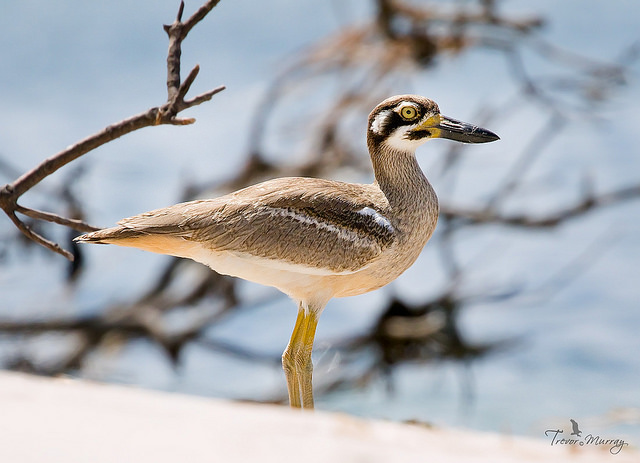
Beach Stone Curlew - Dowardee Island Port Stephens 2018 Photo credit Trevor Murray Hunter Bird Observers Club
Many of these endangered shorebirds, especially the Pied Oystercatcher are presently breeding on Port Stephens beaches and beachgoers are urged to tread carefully as chicks and eggs are at risk of being accidently crushed by people and their dogs.
"The eggs and chicks of most shorebirds are almost perfectly camouflaged and laid in open sand, so it's essential that anyone walking at this time of year avoids bird nesting areas," Mr Bond said.
"Shorebirds are also vulnerable to entanglement in abandoned fishing line. People can help by collecting and appropriately disposing of discarded fishing gear.
"Birds exhibiting behaviours like shrill calling, swooping and other diversional behaviours, indicate it is most likely that people or dogs are too close to the chicks or nests," he said.
If you identify a nesting pair of Pied Oystercatchers or any other shorebird over coming months, please register your sighting with the NPWS by calling: 02 4984 8200.



Bee Aware Of Foulbrood
The NSW Department of Primary Industries (DPI) has declared American foulbrood (AFB) Awareness Month this October to help keep local bee hives healthy and productive.
DPI plant biosecurity prevention and preparedness manager, Chris Anderson, urged beekeepers across the state to look for symptoms of AFB and take prompt action.
“If there are signs of AFB, dark sunken or perforated caps and dead larvae which rope out of cells, a Vita AFB field test kit can be used to diagnose the disease,” Dr Anderson said.
“Kits are available from beekeeping supply outlets and slide-smear samples can be submitted to NSW DPI for analysis - if there’s a positive diagnosis immediate action to rid hives of disease should be taken.”
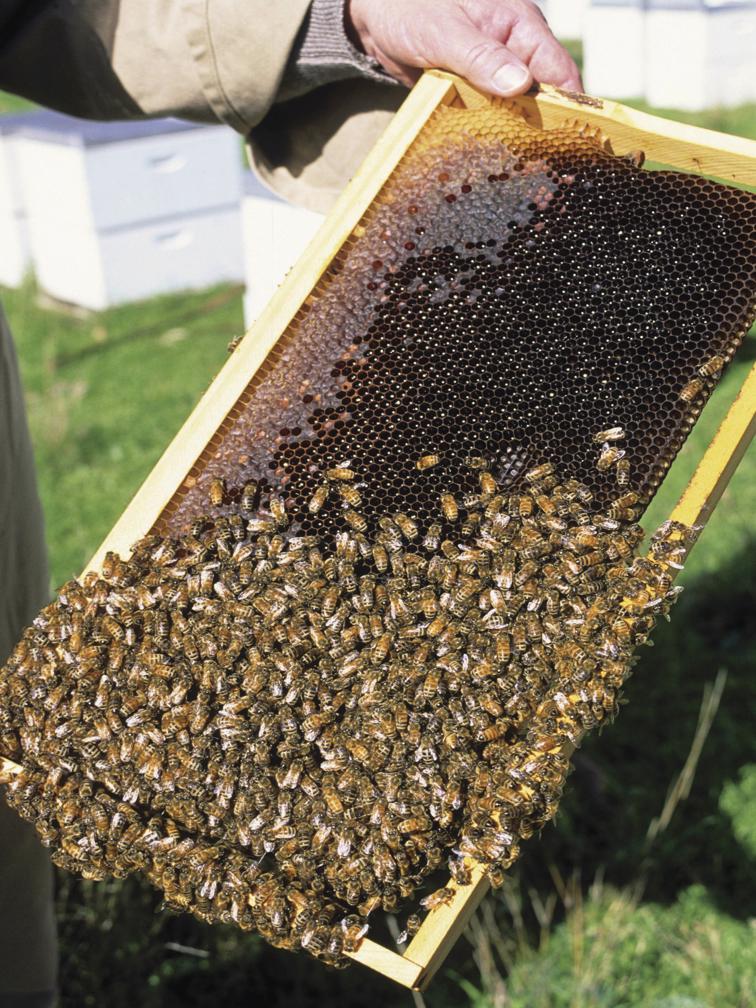
AFB is a notifiable disease under the NSW Biosecurity Act 2015, which means once detected, beekeepers, must notify NSW DPI within one working day by calling 1800 084 881.
Dr Anderson said every beehive in NSW should be inspected and if AFB is found the infected bees must be appropriately euthanized.
“Hive ware should be destroyed by burning, or treated with hot wax or irradiation before bees are re-introduced,” he said.
“It is critical hives with disease are isolated from bees until they have been treated.”
Antibiotics treatment of AFB is illegal and NSW DPI biosecurity officers are on the lookout to ensure antibiotics are not being used to mask AFB in hives.
Antibiotic use spreads AFB, creates serious risk of disease to hives across NSW and contravenes the Stock Medicines Act 1989 and the NSW Biosecurity Act 2015.
AFB Awareness Month aims to increase awareness of AFB and promotes best management practices throughout commercial and recreational beekeeping sectors.
The theme, Inspect, Test, Notify, Act is a prompt to help beekeepers get on the front foot in monitoring bees and hives on a regular basis.
AFB tips and information about its symptoms and best management practices are available online, www.dpi.nsw.gov.au/bees

Koalas In NSW Are Losing Their Homes
They’re losing their homes to excessive tree-clearing and if we don’t act soon, koalas could be extinct in NSW as early as 2050. Due to weakened laws, tree-clearing has tripled in the past two years, resulting in the destruction of the homes of more than 240 native species.
Sign the petition: https://wwfau.org/2NUAaLP
Long Reef Guided Reef Walks
Please find below the 2017 – 2018 timetable for guided walks of Long Reef Aquatic Reserve.
If you’d like to join us on a walk please contact me a couple of weeks before the walk date to make a booking. FREE GUIDED WALKS of Long Reef Aquatic Reserve with NSW Department of Industry & Investment Fishcare Volunteers will be held on the following date:
Dates for 2018Sunday 9 September 2018 12:30pm – 2:30pmSunday 7 October 2018 12:30pm – 2:30pmSunday 4 November 2018 11:30am – 1:30pmSunday 9 December 2018 4:00pm – 6:00pm
Dates for 2019Sunday 6 January 2019 3:00pm – 5:00pmSunday 20 January 2019 2:00pm – 4:00pmSunday 17 February 2019 1:00pm – 3:00pmSunday 17 March 2019 11:30am – 1:30pmSunday 7 April 2019 2:30pm – 4:30pm
Walks are held subject to weather conditions
Bookings are preferred.Please email Wendy to book:
Aussie Backyard Bird Count: 22-28 October 2018
Save the date — the Aussie Backyard Bird Count is back from 22-28 October 2018.
The #AussieBirdCount is a great way to connect with the birds in your backyard, no matter where your backyard might be — a suburban backyard, a local park, a patch of forest, a farm, down by the beach, or the main street of town.
To take part all you need is 20 minutes and your favourite outdoor space. Not only will you be contributing to BirdLife Australia's knowledge of Aussie birds, but there are also some great prizes on offer. Head to the website and register as a Counter today! If you’ve taken part before and are registered for this year why not introduce someone else to the wonderful world of birding through this easy, fun, all-ages event? And if you're a teacher, check out our Bird Count curriculum-based lesson plans to get your students (or the whole school!) involved.
If you have questions about the Aussie Backyard Bird Count, please head to our FAQ page, where you’ll find more information about registering, participating, and troubleshooting.
28 days to go — and counting!


Critically-Endangered Birds Lent A Helping Wing
27 September 2018: Werribee Open Range ZooSixteen Orange-bellied parrots have undergone final health checks at Werribee Open Range Zoo in the lead up to their annual migration from Victoria to Tasmania for breeding season.
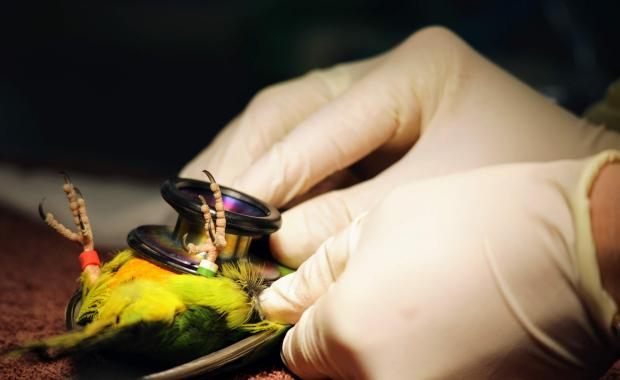
However, these birds aren’t preparing to navigate the treacherous trip using their own wing power. The critically-endangered animals are boarding a plane.
This assisted migration and release is one of the ways Zoos Victoria and its conservation partners are trying to save the bird from extinction. There are now less than 30 of these parrots left in the wild.
“This species is on a knife’s edge right now,” said Werribee Open Range Zoo veterinarian Dr Paul Eden, who completed the birds’ health checks this week. “The release is vitally important for this iconic species to survive for future generations.”
Ten of the 16 birds, microchipped and checked for diseases and parasites, are part of an innovative ‘ranching’ program.
Now in its second year, the program sees wild-born birds collected in Tasmania’s South West Wilderness at the end of their breeding season, flown over the Bass Strait, and housed safely at Werribee Open Range Zoo over winter before being returned to Tasmania in spring.
The other six Orange-bellied parrots are captive-bred birds and this release will be their first experience in the wild.
Although this is a critical time for the species, Dr Eden remains positive.
“We’re really pleased with how the birds’ health is looking,” he said. “Once we have the final all clear, they will be flown down to Tasmania. It’s a really exciting time.”
With such a small population left, the birds’ survival depends on innovation and collaboration with partners and the community. In particular, Zoos Victoria works in partnership with DELWP, DPIPWE and the Orange-bellied Parrot Recovery Team.

Statewide Protection For Large Trees In Victoria
27 September 2018: DELWP
DELWP, through agreement with VicForests, is operationalising the protection of all large trees greater than 2.5 metres diameter in timber harvesting coupes statewide. This provides a consistent approach to large tree protections.
Large Tree ProtectionIn March this year, DELWP introduced a new state-wide protection measure for large trees as announced by the Minister for Energy, Environment and Climate Change, Lily D’Ambrosio. This has initially been implemented by agreement with VicForests and will be formalised in the regulatory framework in 2019.
In all coupes where timber harvesting is conducted, VicForests must retain and protect all large trees from the direct impacts of timber harvesting and regeneration burning, including by ensuring that slash and bark accumulation is cleared from within 3 metres of the base of retained trees.
A large tree is defined as a tree of any species with a diameter at breast height (1.3m above ground) equal to or greater than 2.5 metres over bark.
Where practical, large trees are to be incorporated into retained patches or within expanded exclusion areas.
A large tree may only be removed where a risk assessment determines that it poses an immediate risk to safety. The risk assessment must be documented and demonstrate that all alternatives to removal of the tree were appropriately considered.
This standardises large tree protections across the state.
Improving the protections for large trees will provide benefits to a range of hollow-dependant fauna including the Greater Glider, Leadbeater's Possum, Yellow-bellied Glider, Mountain Brush-tailed Possum, Masked Owl, Sooty Owl and Powerful Owl.
A size-based measure has been implemented because tree age is difficult to estimate by observation in most forest types, whereas diameters can be reliably measured pre-harvest. VicForests will measure candidate large trees using diameter tape. Trees of any species within a timber harvesting coupe that meet the large tree definition will be marked with a GPS and recorded on the Forest Coupe Plan, and protected. These large tree location records will then be included on a centralised register of large trees.
If there is no practical alternative that has a lesser environmental impact, the construction of roading and snig tracks through retained large tree patches or expanded exclusion areas is permitted. However, any large trees must be retained. Further, harvesting slash created during snigging or road construction must be removed from the patch to minimise fire risk.
Nature Writing Prize 2019
Calling all nature writers!The Nature Conservancy Australia is delighted to open the fifth biennial Nature Writing Prize.
The winner of the best essay (3,000 – 5,000 words) in the genre of ‘Writing of Place’ will receive a $5,000 award and will be published as an online multimedia essay by Griffith Review – Australia’s leading literary quarterly publication.
The prize will go to an Australian writer whose entry is judged to be of the highest literary merit and which best explores their relationship and interaction with some aspect of the Australian landscape.
Entry costs $30.00. The deadline for submissions is 1 February 2019 and the winner will be announced in May 2019. The prize is open to Australian citizens and permanent residents.
EPA Commences Prosecutions For Alleged Unlawful Storage Of Pesticide On Central Coast
24 September 2018: EPAThe NSW Environment Protection Authority (EPA) has commenced prosecution proceedings in the Land and Environment Court against a Central Coast man and separately, the Central Coast Council, in relation to the alleged unlawful storage of pesticide at a sports oval at Mangrove Mountain August 2017.
The EPA alleges that the man, while volunteering for Council as a groundskeeper, stored a pesticide in a Coca-Cola bottle in a disabled toilet facility at the Mountain Districts Sports Ground.
The alleged incident led to the poisoning of a 21 year old man who drank the contents of the Coca-Cola bottle, and was hospitalised as a result.
The EPA alleges that the Council permitted the storage of a pesticide in a manner that injured another person.
“The regulations for the storage of pesticides are in place to protect the community and the environment, any disregard for the regulations can have serious consequences,” said the EPA’s Chief Environmental Regulator Mark Gifford.
The EPA has charged both Council and the Central Coast man with the prosecutions to come before the Land and Environment Court on 12 October 2018.
Adani: FOI Documents Expose Double Standards On River Haul
September 25, 2018: LTGLock the Gate has obtained documents under Right to Information laws in Queensland which reveal that Adani received a special deal on access to 12.5 billion litres of river water compared to other water users, and environmental assessments of it were weak.
The documents reveal that:- The licence granted to Adani by the Qld Government gives them the right to take almost as much water from the Suttor River as all other current water users combined, who currently hold nominal entitlements to a total of 15.4GL/annum
- Landholders objected to the grant of the water to Adani, and highlighted that streamflows in the region are already in decline. Irrigators have previously been refused licences to take less water than Adani from the Suttor River.
- The desktop analysis done by Adani on the take of water is based purely on historical water usage data from 1809-2004, and effectively ignores the impacts of climate change, despite the mine planning to run until 2077.
- The limited desktop analysis undertaken by the Department of Natural Resources and Mines identified threats to lagoons higher on the floodplains and endangered regional ecosystems from the cumulative impact of Adani and other water take.
This follows the release of polling yesterday which found 70% of Queenslanders support the cancellation of Adani’s water licences to safeguard water resources for Qld. farmers.
“It’s clear there’s been a massive double standard at play between mining and agriculture, with right to information documents revealing in the past irrigators have been refused licences for less water than those granted to Adani” said Carmel Flint, spokesperson for Lock the Gate Alliance.
“Adani now has rights to almost as much Suttor River water as all other water users combined. It is incredibly galling to see Adani get special access to river water for its dirty coal mine as Queensland grapples with a severe drought.
“The environment is also going to suffer as a result of Adani’s river water haul, with the department of natural resources identifying risks to lagoons high on the floodplain and endangered regional ecosystems.
“However, most damning is evidence that there has been no assessment of the impacts of climate change, despite the fact this water licence has been granted until 2077.
“We can expect much less water in our rivers over the next 60 years due to a changing climate and local landholders say streamflow is already declining.
“These documents underscore again just how wrong the decision was last week by the Federal Environment Minister to approve Adani’s North Galilee Water Schemei to take Suttor river water and pipe it to their mine, without environmental assessment.
“It’s a slap in the face to rural communities and a real threat to the environment,” she said.
Right to Information documents available on request.
- The licence granted to Adani by the Qld Government gives them the right to take almost as much water from the Suttor River as all other current water users combined, who currently hold nominal entitlements to a total of 15.4GL/annum
- Landholders objected to the grant of the water to Adani, and highlighted that streamflows in the region are already in decline. Irrigators have previously been refused licences to take less water than Adani from the Suttor River.
- The desktop analysis done by Adani on the take of water is based purely on historical water usage data from 1809-2004, and effectively ignores the impacts of climate change, despite the mine planning to run until 2077.
- The limited desktop analysis undertaken by the Department of Natural Resources and Mines identified threats to lagoons higher on the floodplains and endangered regional ecosystems from the cumulative impact of Adani and other water take.

Greening Your Home - Eco Retrofitting The Suburbs - Special Event
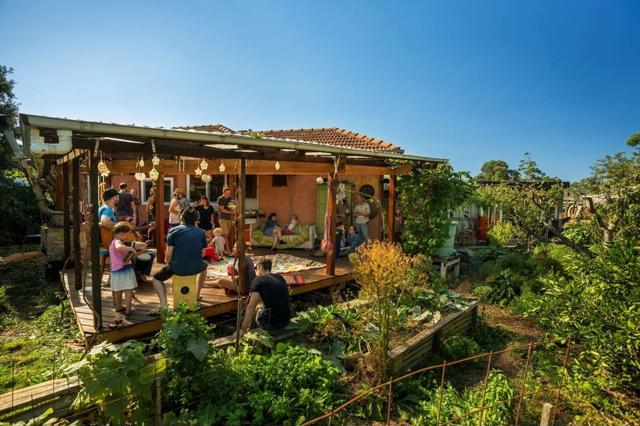
There’s no need for a ‘tree-change’ or ‘sea-change’ - Permaculture has made a shift to the suburbs
An extraordinary evening is planned for up to 400 people at Dee Why RSL on Tuesday 9th October at 7pm.
‘Our aim is to better equip residents of the Northern Beaches and beyond to live sustainably in the suburbs.’ said Michelle Sheather, Permaculture Northern Beaches Green Home team leader. ‘Over the last 18 months, PNB’s Green Home project has run dozens of workshops, meetings and courses on organic living, sustainable building, clean energy and wise use of resources.’
The culmination of the project, made possible by a community grant from Northern Beaches Council, is the October 9 special event on Eco Retrofitting the Suburbs. The panel of speakers for one night only, is David Holmgren, Jo Gillies and Costa Georgiadis. The talks will show how ordinary Australians can downshift and retrofit their houses, gardens, and lifestyles to be more sustainable and resilient.
David Holmgren, is one of the founders of permaculture, a leading ecological thinker, teacher, respected writer and speaker. He promotes permaculture as a realistic pathway to sustainability and a powerful way of life. David’s talk will introduce his best-selling new book RetroSuburbia - the downshifter’s guide to a resilient future (2018) that empowers us to make positive changes to everyday actions extending from the household out into neighbourhood and wider community activity.
Jo Gillies is founder and director of Archisoul Architects in Manly. She has worked with clients across the Northern Beaches to design sustainable houses that suit our climate, region and lifestyle. Jo will speak on aspects of sustainable house design including passive solar, energy options and which materials can be used to lessen our environmental footprint. Design efficiencies for existing buildings and how do an eco-friendly retrofit will be discussed. Jo will show that good design principals can create a sense of community and soul for the household.
Costa Georgiadis has been the host of Gardening Australia, the ABC's iconic gardening show, since 2012. He is a landscape architect who has a passion for plants and people. For Costa, soil and water are central to absolutely everything. Costa has written the forward for the book ‘Don’t be afraid to throw open RetroSuburbia on any page at any time and dive into the possible …’ says Costa.
Come along to be part of this great evening. Bookings are essential www.permaculturenorthernbeaches.org.auA donation of $5 is recommended as entry fee.
The talk night will be during the school holidays, older children and teenagers are most welcome with an adult. A raffle with prizes of eco products and a copy of David’s book will be held on the night.
Permaculture is a design system for sustainable living in your home, garden and lifestyle. It originated in Tasmania in the 1970s with co-founders Bill Mollison and David Holmgren and is now practiced worldwide. The word is the merging of permanent/sustainable and culture.

Trout Season Opens This Long Weekend
September 26, 2018: DPINSW fishers are in for a great long weekend on the water, with the official opening of the State’s trout season set for this Saturday, 29 September.
Department of Primary Industries (DPI) Senior Fisheries Manager Cameron Westaway said fishing restrictions during the spawning period have allowed the species to travel up rivers and streams to breed and replenish numbers.
“Given the state’s current dry conditions, many streams and rivers are experiencing below average flows, however the spring weather and well-stocked waterways will still see fishers flocking to their favourite fishing spots,” he said.
“Many keen anglers are expected to head to popular fishing destinations, such as the Thredbo and Eucumbene rivers in the Snowy Mountains, Fish River near Bathurst, Goobarragandra and Goodradigbee Rivers near Tumut and Yass, as well as many other streams in the Central Tablelands and New England areas.”
Mr Westaway said wild trout numbers would also be boosted by a series of planned releases during the 2018-19 fish stocking season, with approximately three million trout and salmon to be released across the state.
“By the end of the October long weekend, more than 1.3 million juvenile rainbow trout and over 110,000 juvenile brown trout will have been released into the rivers and streams across the Central Tablelands and New England regions,” he said.
“Releases are conducted by DPI in conjunction with the Central and New England Trout Acclimatisation Societies, and stocking will continue over the coming months in the Southern Highlands and Monaro regions and in the various trout dams.”
Locations of historical stocking sites for all species can be viewed at www.dpi.nsw.gov.au/fishing/recreational/resources/stocking
The open season for recreational fishing in trout streams closes on Monday, 10 June 2019, following the June long weekend, but all trout dams remain open to fishing.
DPI Director Fisheries Compliance Patrick Tully said while most fishers were aware of size and bag limits and would abide by the rules, fisheries officers would be in the field to ensure all fishers obeyed the law.
“It’s important all anglers check they have a current and valid NSW Recreational Fishing Licence prior to fishing this weekend,” he said.
Information on the NSW Recreational Fishing Fee and trout fishing rules are available from www.dpi.nsw.gov.au
All Aboard The Driverless Shuttle
26 September 2018: NSW Roads and Maritime Services
The first passengers have ridden on the NSW Driverless Smart Shuttle at Sydney Olympic Park this week, ahead of services starting in the school holidays.
A select group of competition winners from the 2018 Easter Show boarded the vehicle on Olympic Boulevard, opening stage two of the state’s first driverless shuttle trial.
Minister for Transport and Infrastructure Minister Andrew welcomed the milestone.
“I’m very excited to see passengers on these vehicles. We know self-driving cars will play a major role in the future and that’s the future we’re preparing for right now,” Mr Constance said.
In August 2017 the NSW Government, through the Smart Innovation Centre, joined forces with HMI Technologies, NRMA, Telstra, IAG, Sydney Olympic Park Authority, and now the University of Technology Sydney, to conduct a two-year trial of the state’s first highly automated Shuttle.
“The ultimate goal of this landmark trial is to find the best way to harness the next generation of driverless technology and how to make it work for the people of NSW,” Mr Constance said.
“We want to bring customers along on the journey, giving them the opportunity to experience this technology and respond to the vehicle so we can implement the feedback as we work towards a connected and automated future.”
Minister for Roads, Maritime and Freight Melinda Pavey said it’s a landmark moment for the state.
“We’re on the cusp of optimising our road infrastructure with emerging technologies including driverless vehicles making our roads safer, more efficient and enhancing mobility for customers,” Ms Pavey said.
“Since launching the trial we’ve been working to ensure the Shuttle delivers a safe and comfortable journey, first testing the shuttle’s braking, sensors and communications in the off road environment at Newington Armoury, then after safe and successful operation we progressed testing to public roads around Sydney Olympic Park.”
The Navya shuttle is considered a level four, highly autonomous vehicle designed to carry up to 12 passengers. It can travel up to 40km/h in autonomous mode with features including front and rear cameras, LIDAR, GPS technology and autonomous emergency brakes.
The shuttle will continue to operate on Olympic Boulevard, with members of the public able to book limited free rides over the coming weeks. Transport for NSW will release these dates on the Smart Innovation Centre and trial partner websites with bookings to be available two days a week, before the trial progresses to stage three in early 2019.
Stage three of the Shuttle trial will focus on servicing parts of the Sydney Olympic Park precinct by testing a variety of uses including transporting office workers, residents and other precinct workers.
“We want to use the trial to help develop the systems that will enable automated vehicles to be connected to our infrastructure, like traffic lights and to our customers through their devices and applications,” Mr Constance said.
This trial is part of a growing portfolio of connected and automated vehicle trials in NSW that are exploring how the technology will improve both the safety and mobility of customers in metropolitan and regional NSW.
The NSW Government also recently announced two regional automated vehicles trials in Coffs Harbour and Armidale as well as a trial of partially automated vehicle technology on the Sydney Orbital network.
“There is still some way to go before self-driving vehicles become common place on Australian roads, but as a Government we are ready to take the next step,” Ms Pavey said.
To register for a ride visit here
$52 Million To Deliver Free Meningococcal Vaccine To Teenagers
All Aboard The Driverless Shuttle
UNSW Graduate Personifies The Spirit Of The Invictus Games
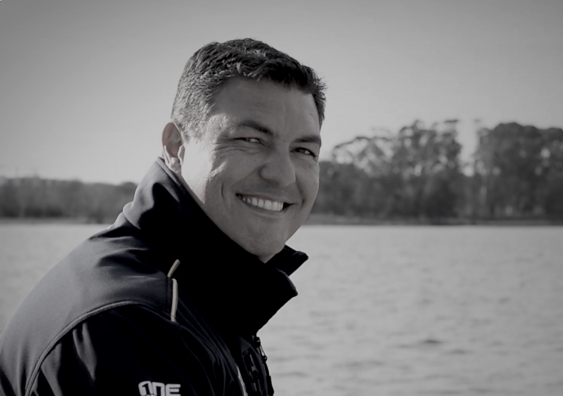

Study Reveals Patterns In STEM Grades Of Girls Versus Boys
Safety And Pollution Setting The Agenda For Maritime Allegiances The World Over
Cheaper Medicines For Australian Patients
- pregabalin: around 200,000 patients per year with neuropathic pain will now pay $33.38 per script, a saving of up to $6.12 per script;
- valsartan with hydrochlorothiazide: about 4,500 hypertension patients per year will now pay $23.96 per script, a saving of up to $2.18 per script; and
- dorzolamide: about 1300 glaucoma patients each year will now pay $19.18 for these eye drops, a saving of $3.02 per script.
- Since coming into Government, the Liberal National Government has helped improve the health of Australians by subsidising almost $10 billion worth of new medicines.
App Delivers Life-Saving Training To Community Volunteers
- road crash rescue
- flood rescue
- chainsaw operations
- driving operational vehicles
- operating communications equipment
- traffic safety.
Disclaimer: These articles are not intended to provide medical advice, diagnosis or treatment. Views expressed here do not necessarily reflect those of Pittwater Online News or its staff.